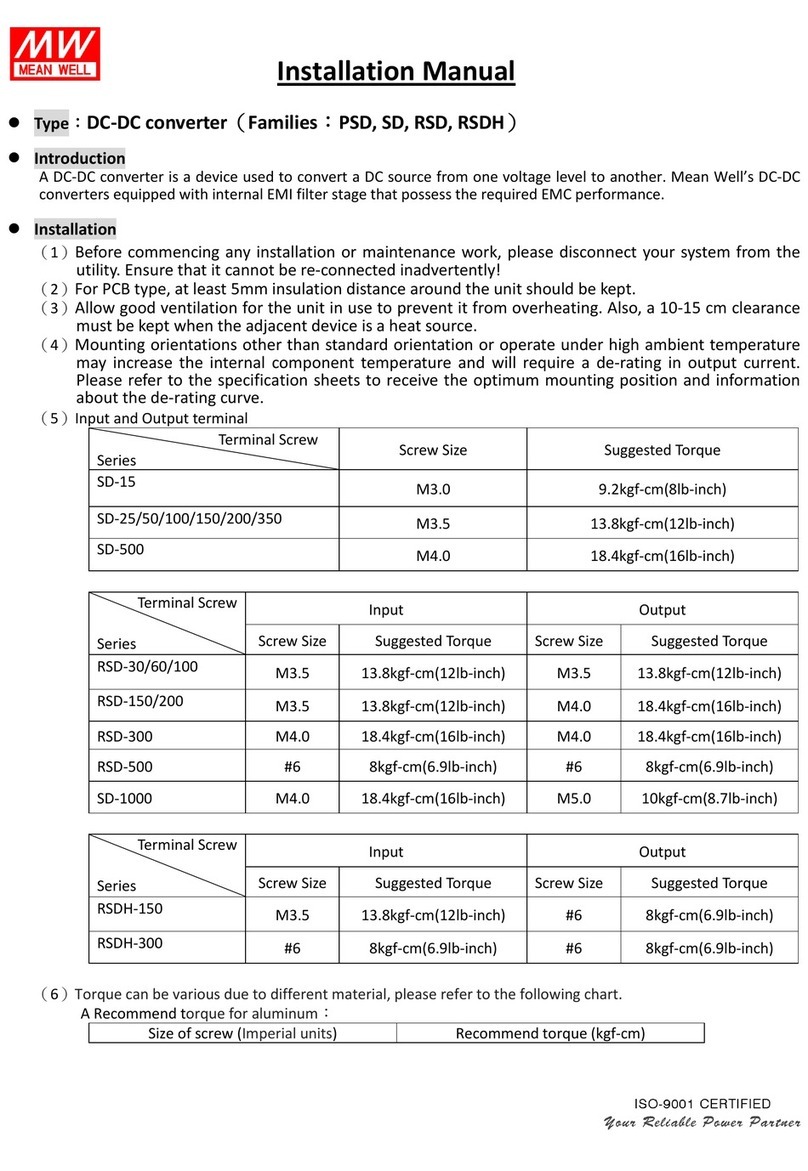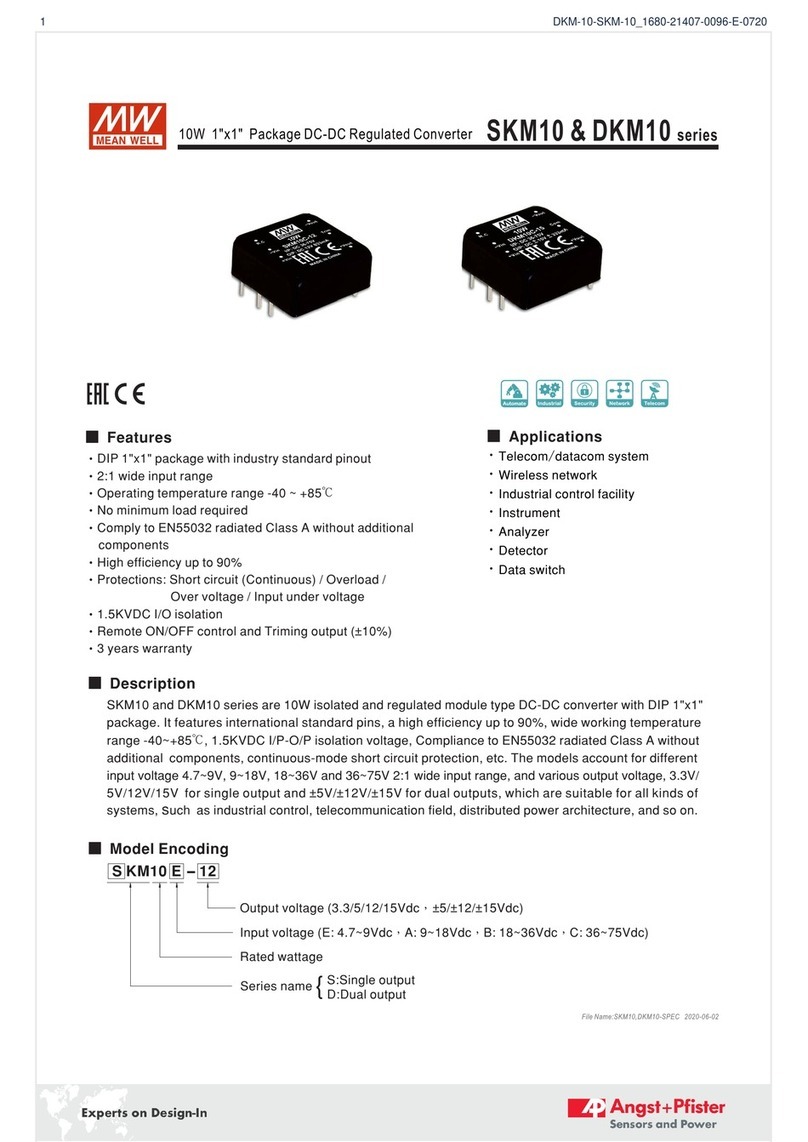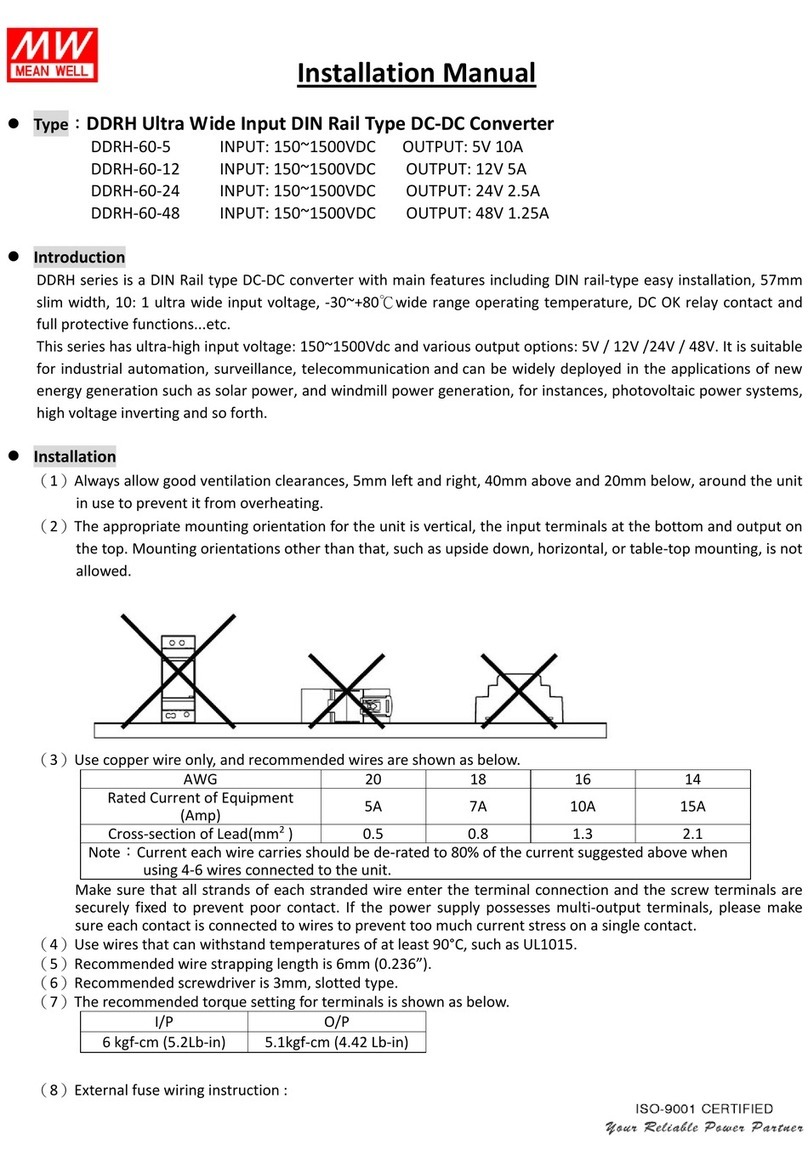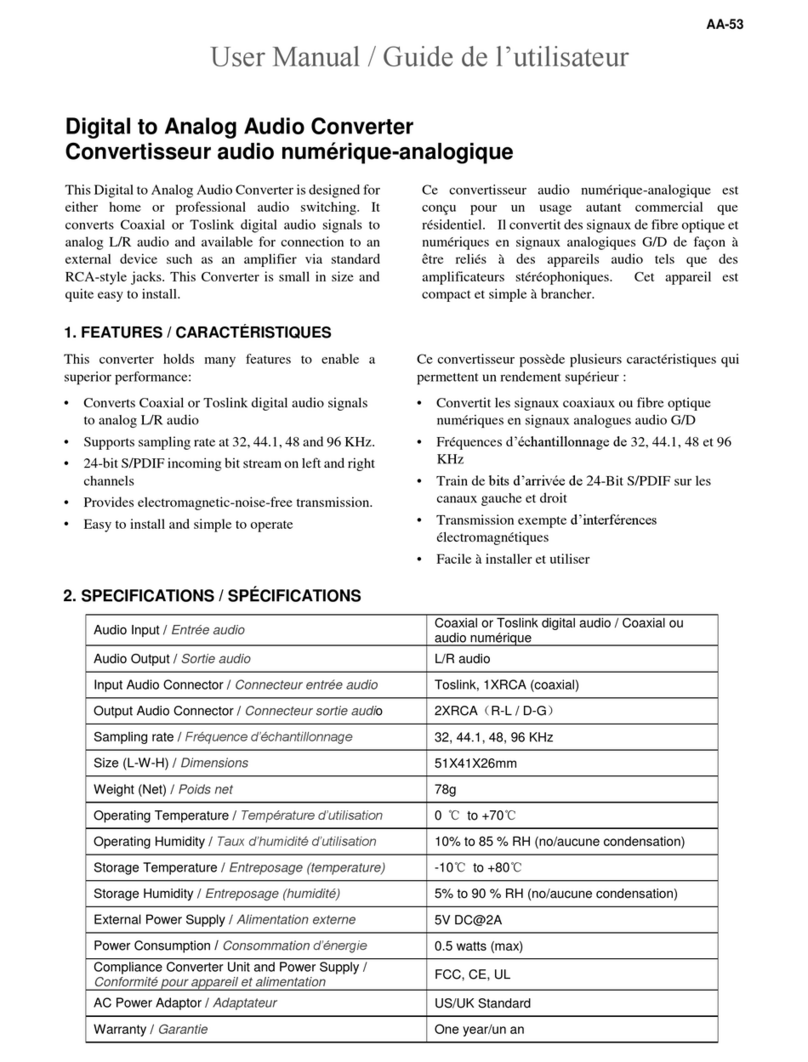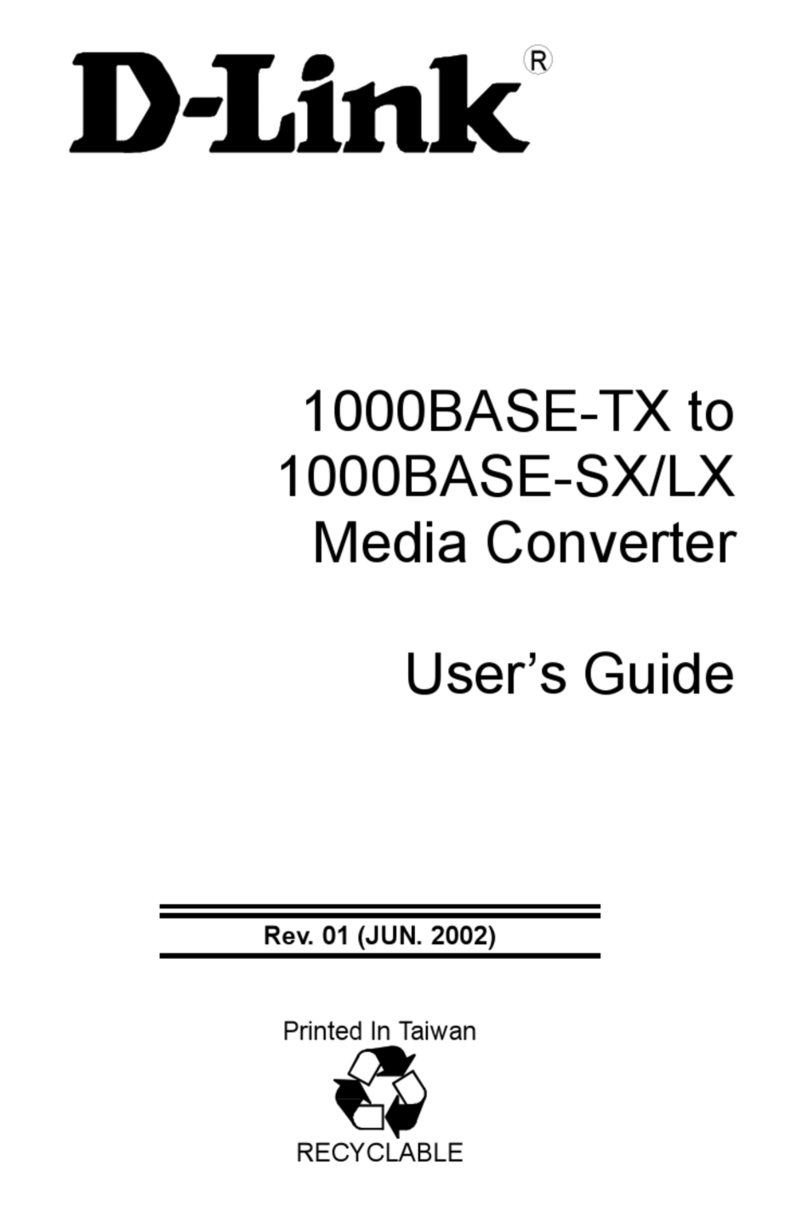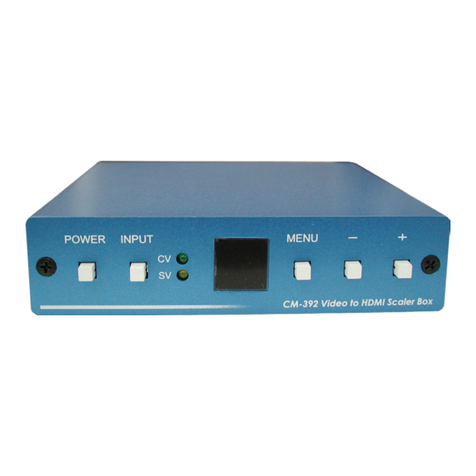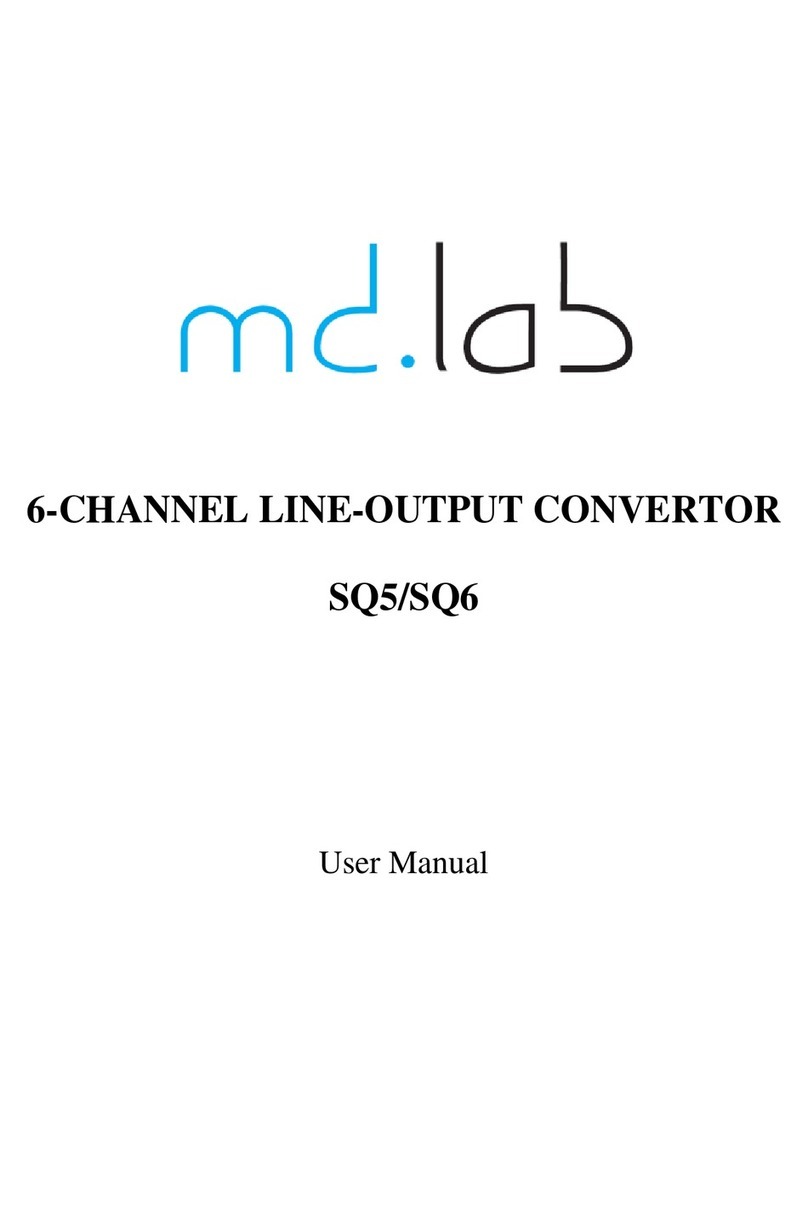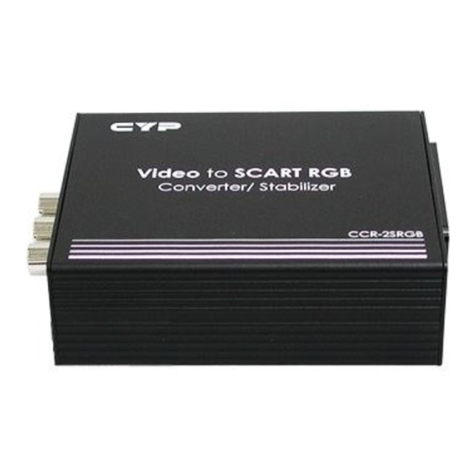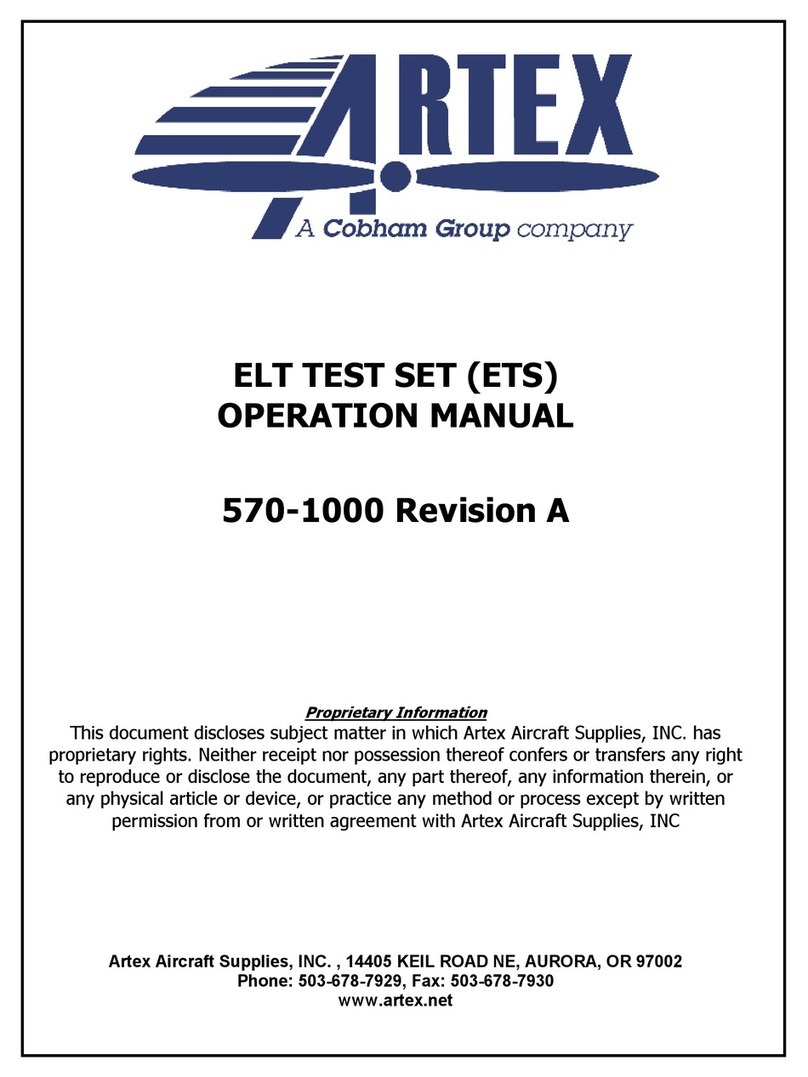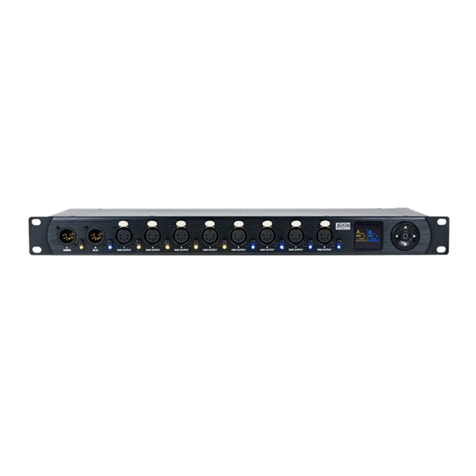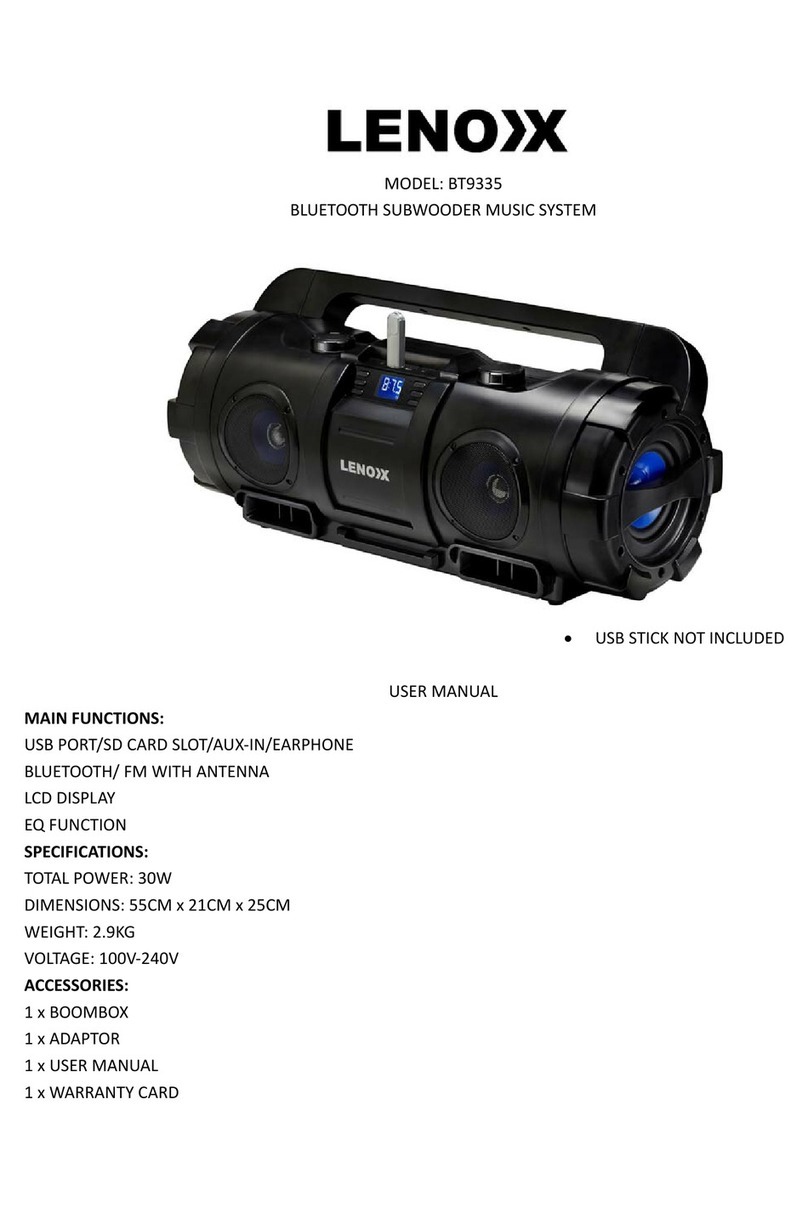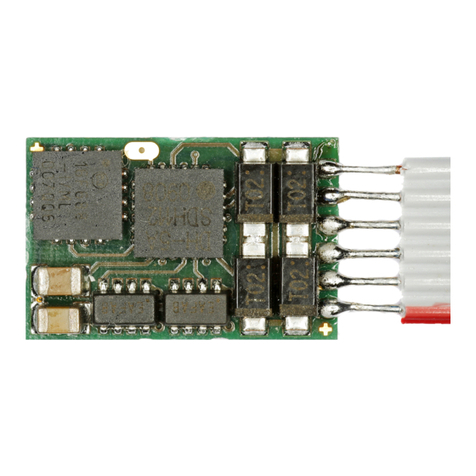Meanwell DDR-240 Series User manual

www.procontechnology.com.au
1
Phone: (0
3
)
98306288
MEAN WELL DC-DC CONVERTER USER MANUAL
1. INPUT
1.1 INPUT VOLTAGE
DC to DC converters are widely used all over the world. Many types of products are available for both high and low DC voltage
input. Before using any DC-DC converter, ensure that the output voltage and current is suitable for the intended load. Verify the
correct input connections, particularly the polarity, and any other conditions that might affect the unit's operation.
If an input voltage is applied which is different from the converter's rating, the unit may be damaged. Also remember that if the
input voltage is not pure DC, the device may not operate normally. Only the Meanwell SD-100D and SD-150D, type D input
converters allow an AC input (85~132VAC).
For all Mean Well Models refer to the label on the converter for the input voltage range.
1.2 INPUT CURRENT
The essential difference between an AC to DC power supply and a DC to DC converter is not just that the DC-DC converter
generally uses lower input voltages but that it does not require rectification of AC to DC nor does it require AC power factor
correction circuitry. Standard DC to DC converters simply filter the Direct Current (DC) input which then charges a smoothing
or filtering capacitor. The input current required is determined by the output power, input voltage and efficiency. The simplest
input stage with reverse polarity fuse protection is shown below:
Fig. 2
Not all Meanwell DC-DC converters have reverse polarity input protection. The simplest form of protection is a fuse and a
diode; if necessary the user may provide these components externally. The latest Meanwell high-wattage DC-DC converters
(RSD and DDR series) use a MOSFET circuit that tolerates accidental polarity reversal without damaging the unit.
Also not all DC-DC converters have sufficient EMI (Electromagnetic Interference) filtering and may require external filtering
of the input to meet regulatory requirements. Please refer to the data sheet.
1.3 INRUSH CURRENT
When power is applied, a large current flows to charge the input smoothing or filter capacitor. This current is called the "inrush
current". The value of the inrush current varies according to the size of the smoothing capacitor and the presence or absence of
the inrush current protection devices. The inrush current is many times larger than the normal input current. The more DC-DC
converters used in the same system, the larger the inrush current. Please ensure that fuses, switches, and other parts connected to
the input supply side are appropriately selected. Also, when powering DC-DC converters from other DC sources you will need
to allow for this inrush current and make allowance for the switch-on sequence of multiple converters.
If the converter's fuse is blown, do not replace the fuse and operate the unit before rectifying the problem that caused it to fail –
otherwise further damage may occur! Always replace the fuse with the same rated type. Always remove power to the unit and
discharge the input smoothing capacitor before attempting to replace the fuse.

www.procontechnology.com.au
2
Phone: (0
3
)
98306288
2. OUTPUT
2.1 MAXIMUM OUTPUT POWER
Maximum power output (Pout) is defined as: Pout = Vout x Iout
Where Vout is the output voltage and Iout is the output current. Some DC-DC converters allow Vout to be adjusted. However,
Pout must remain constant. Therefore, if Vout is increased, the maximum Iout must be decreased.
E.g. The DDR-120B-12 converter has an output voltage of 12 volts and an output current of 10 amps. The maximum continuous
power output is 120 watts. The adjustable voltage range is 9 volts to 14 volts. If the output voltage is adjusted to 13.8 volts, the
maximum continuous output current can be calculated by:
Iout = Pout / Vout
i.e. Iout = 120 watts / 13.8 volts = 8.7 amps.
The output voltage can also be adjusted lower than 12 volts. However, due to the design of the output circuit, exceeding the 10
amp maximum output is not recommended as over current protection may activate.
2.2 OVERCURRENT PROTECTION (OCP) / OVERLOAD PROTECTION (OLP)
Most Mean Well DC-DC converters are equipped with protection circuits that automatically operate when the output current or
output power exceeds a minimum of 105-110% of the rating. Some Meanwell module types do not provide continuous overload
or short-circuit protection, in this case the maximum current output should not be exceeded or damage to the device can result.
Types of Protection:
a. Foldback Current Limiting:
The Foldback Current Limiting circuit is designed to linearly decrease both the voltage and current to a level that will prevent
the unit from being damaged during overcurrent/overload conditions. See curve "a" in Fig. 4.
b. Constant Current Limiting:
Constant Current Limiting allows the output current to remain stable, but reduces the output voltage to a level that permits the
safe operation of the unit. Constant Current Limiting is preferred when charging batteries and when driving devices such as
motors, incandescent lamps and highly capacitive loads which have a high initial current. See curve "b" in Fig. 4.
c. Constant Power Limiting:
Constant Power Limiting linearly reduces the output voltage and simultaneously allows the output current to increase. See curve
"c" in Fig. 4.
d. Hiccup Current Limiting:
When overloaded, the output voltage and current will be shut down for a short period of time and then automatically attempt to
periodically recover again (hi-cup) until the fault condition is removed. In some DC-DC converters the output voltage is shut
down permanently*, reducing the output voltage and current to zero. A manual recovery is then necessary. In some cases a DC-
DC converter will operate in constant current mode and then shut down after a time delay of 5 seconds. *It is possible, with
some SD Series units, to modify the DC-DC converter to provide a continuous constant current output rather than shutting
down the unit. Please ask Procon Technology for information.
Fig. 4

www.procontechnology.com.au
3
Phone: (0
3
)
98306288
Recovery Circuits
a. Automatic Recovery
Automatic Recovery senses the removal of the fault condition and returns the unit to normal operation.
b. Manual Recovery
Before proceeding with Manual Recovery, make sure that the fault condition is removed. Manual Recovery requires cycling the
input power off and on.
Overcurrent /Overload Precautions
Protection and Recovery circuits are designed to prevent damage to the device during an Overcurrent or Overload condition.
However, leaving a device overloaded (or shorted) for extensive periods of time is NOT recommended and may result in
reduced life and/or damage to the DC-DC converter.
2.3 OVER TEMPERATURE PROTECTION (OTP)
Some DC-DC converters have an excessive temperature shut down circuit. When the unit's operating temperature is too high,
the protection circuit will shut down the output. Some common causes of excessive temperature are Overcurrent/Overload, high
ambient temperature or restricted ventilation (e.g. faulty cooling fan). Automatic or manual recovery can occur once the cause
of the over temperature condition is removed (high ambient temperature and/or high load).
2.4 OVER VOLTAGE PROTECTION (OVP)
When the output voltage exceeds the rated value by approximately 130%, the unit will be protected by the following three
possible methods to prevent damage to the components at the load terminals:
a. Shut down the output voltage. Reset the DC-DC converter by turning it OFF for several seconds and then back ON again.
b. Hiccup mode. The output will shut down for a few seconds and then attempt to restart automatically.
Over Voltage Protection may be triggered by a fault within the converter, most commonly by setting the output voltage trim pot
too high (especially when switching inductive loads) or it can occur when an external voltage is applied to the output. Using an
external voltage applied to the output terminals, provides a simple means of testing the over voltage threshold of a DC-DC
converter. Note, excessive voltage or reverse polarity voltages applied to the output can damage a DC-DC converter!
There are three kinds of Over Voltage Protection:
a. Disabling the control circuit controlling the feedback loop shutting down the unit.
b. Shorting the output by using a "Crowbar" activating the unit's overcurrent/overload protection.
c. Clamping the output voltage by using a zener diode.
Fig. 5

www.procontechnology.com.au
4
Phone: (0
3
)
98306288
3. INSTALLATION, WIRING AND OPERATION
Even the most efficient switched mode DC-DC converter will not function properly if the installation, wiring or connections are
incorrect. Follow the installation, wiring and connection instructions specified in the data sheet or manual before switching on
any unit. Also see the document 'Power Supply Cables and Connectors' (Meanwell_Connect_Safety.pdf).
3.1 INSTALLATION
Heat Dissipation
a. Ensure the unit is properly ventilated.
b. Install the unit in the correct position. Remember 'hot air rises' and ensure correct orientation.
c. Ensure the unit has proper heat conduction and is not mounted near other heat sources.
d. When you install two or more units, leave additional space between them for cooling.
e. Forcing air over the unit will improve heat dissipation.
Fig. 6
When mounting any device please refer to any notes and temperature derating curves in the specifications. For example with
DIN rail converters, the minimum installation clearances are: 40mm on top, 20mm on the bottom, 5mm on the left and right
sides unless the adjacent device is also a heat source then 10-15mm clearances are recommended.
Output Derating
Output power depends on operating temperature. Derate the output of the DC-DC converter according to the temperature
derating curve shown in the specifications. The Railway DC-DC converter series (RSD) when mounted on an iron plate of
sufficient size allows for the elimination of any derating up to its' maximum operating temperature of 70°C. Note the output
power may also need to be derated with low input voltages. Specifications cannot be guaranteed when under-voltage. Some
units will shut down on under-voltage.
Fig. 7
Securing Screws
Always check the specified screw length and tightening torque when attaching to your equipment enclosure.
Fig. 8
See the mechanical
specifications in the data
sheet. Length L=? is in
millimetres.

www.procontechnology.com.au
5
Phone: (0
3
)
98306288
3.2 WIRING AND OPERATION
Input and output wiring
a. Separate the input and output wires so that any external surge voltage and/or ripple on the input lines does not interfere with
the output side. This will also insure that the output ripple and noise does not increase.
b. Use short, thick wires on the output. Wire thickness will also depend on the current capacity required.
c. When connecting wires to the unit, use the appropriate terminal screws, solder-less terminals and tools.
d. Be careful to prevent wire off-cuts or other objects entering the unit. It is recommended that the converter not be mounted
until all work has been completed or the vents are covered until the converter is ready to be operated.
Fig. 9
Ground connection
Connect the ground terminal of the DC-DC converter to the frame of the equipment with regulation size and colour wire to
ensure safety and to minimize noise and interference.
Fig. 10
Inrush Current Control
Mean Well DC-DC converters have large capacitors incorporated in the input supply circuit. Consequently, there is a high
inrush current when input power is applied (see the unit's data sheet). When using several units in a single system, do NOT
apply power to all of them simultaneously. Note: ten SD-100D units could theoretically draw a peak inrush current of 180A at
96VDC. A preferred power application would be a "delayed power circuit" as in Fig. 11.
Fig. 11

www.procontechnology.com.au
6
Phone: (0
3
)
98306288
Remote Control and Remote Voltage Sensing
a. Remote Control of the Output
The output of some DC-DC converters can be controlled by supplying an appropriate signal to the RC terminal. Normally an
open-circuit (>4 volts) will turn the output on and a short (< 0.8 volts) will turn the output off. With the SD-500 and SD-1000
units an externally applied voltage is required to turn off the output. The SD-1000 provides a 12V auxiliary output for this
purpose. You should always refer to the data sheet for all Remote ON/OFF controlled converters. See Fig 12.
b. Remote Voltage Sensing
DC-DC Converters equipped with a Remote Voltage Sense capability (SD-500 and SD-1000) can detect a voltage drop at the
load. This feature is especially useful when the unit and the load are connected by long cables. With Remote Sensing capability,
+S (or +RS) and –S (or –RS) terminals are provided (as shown in Fig. 12). When the +S and –S terminals are connected to the
load side of the output, the unit will be able to detect any voltage drop at the load. The unit will raise the output until the correct
voltage is provided at the load terminals. Remote sensing compensates for voltage drops of up to 0.5V.
Fig. 12
Operation in Parallel
Power supplies are commonly used in parallel to increase the output current. Mean Well's DDR-240 and DDR-480 series are
designed for parallel use. These power supplies have "P+" and "P–" terminals that sense other power supplies connected in
parallel. This circuit controls the output voltage and allows a more efficient operation of each supply – sharing the load current
equally.
Fig. 13
Notes on parallel operation:
a. Always use the same model type and voltage in any parallel configuration.
b. The output voltage of each unit should be the same (within 0.2V).
c. Each converter's output should be wired together with short and thick wiring first and then connected to the load.
d. The total output current should not exceed 90% of the total current for all power supplies.
e. Always check the specifications for the required connections, restrictions on the number of parallel units that can be used,
minimum load requirements and connecting the sense terminals (+S and –S) or other features (e.g. remote control).

www.procontechnology.com.au
7
Phone: (0
3
)
98306288
Fig. 14
Figure 14 illustrates a method of paralleling DC-DC converters for redundant use - increasing the reliability of a system. Diodes
are connected to the positive side of each unit's output. This connection is only for use in redundant systems, where the
maximum current requirement can be handled by one unit alone, and allows the system to continue to operate even when one
unit fails. Also see the Meanwell DRDN20 for 20A and the DRDN40 for 40A applications. These modules provide a DC OK
indication and alarm relay contacts.
Operation in Series
DC-DC converters are often connected in series to produce higher voltages. Two types of series connections are described
below. For series operation all DC-DC converters require 'floating' or isolated outputs!
a. Fig. 15 describes a sample setup for separate distinctive loads. Protective diodes (D1 and D2 below) may be necessary with
this type of application to protect the units if connection X is lost.
Fig. 15
b. Fig. 16 illustrates a sample setup for series connected DC-DC converters. The diode, connected directly across the output
terminals, is also recommended in any application where a reverse voltage may be applied to the unit's output. As a general
guide, the diodes should be Schottsky Barrier with a reverse voltage more than twice the output voltage and rated output current
more than twice the rated output current or short-circuit current whichever is greater.
Fig. 16

www.procontechnology.com.au
8
Phone: (0
3
)
98306288
Additional Output Ripple and Noise Control
Fig. 17 is a diagram of a sample circuit that will improve the output ripple, noise, and Electromagnetic Interference (EMI) or
Common Mode Noise. Fig. 17 is an example circuit only. Further design considerations are essential for specific applications.
Fig. 17
Note: C1 & C3 are electrolytic capacitors and control the output ripple. Their values should be between 47uf and 100uf. C2, C4
& C5, C6 are high frequency ceramic capacitors and reduce the output noise. Their values range from 0.01uf and 0.1uf. The
value of inductance L1 is 0.5uH to 5uH.
Surge Voltage Control
Fig.18 shows a circuit used to control voltage surges that may be caused by power fluctuations or stray surges due to lightning.
The circuit has varistors connected between +Vin & –Vin, +Vin & FG, and –Vin & FG. This type of circuit is the minimum
recommended in areas where there are frequent lightning strikes.
Fig. 18

www.procontechnology.com.au
9
Phone: (0
3
)
98306288
4. SAFETY
Generally speaking, Meanwell DC-DC converters are manufactured to produce an isolated stabilized DC supply. Converters
with high voltages (greater than 60VDC) must not be used until incorporated into a suitable enclosure as required by local laws
and regulations. Please consult the relevant authority.
Electric Shock
High voltages may be present inside the converter. Do NOT attempt to repair the unit or remove the cover. If the unit needs
service or repair return it to Mean Well or an authorized Mean Well repair centre. When the unit is installed in a system, be sure
that the case is properly grounded. Some units are 'Open Frame' and supplied without a case. Use extreme caution when
touching or removing these units for repair. Appropriate safety equipment and procedures must be used when touching or
removing the units where high voltages are present.
High Operating Temperatures
When the unit is operating at high output or is faulty, internal component temperatures may exceed 100ºC. Do NOT touch any
components inside the case. The external case temperature may also be at a point where it is unsafe to touch.
Keep all flammable, explosive, and volatile materials away from any DC-DC converter.
Rated Input Voltage
The input voltage of the DC-DC converter, by design, is limited. It can be dangerous to apply voltage which is outside of the
specified range, damage may occur to the unit. Always operate it within its specified input voltage range. Always check the
polarity of the input voltage before applying power.
Leakage Current
The internal noise filter capacitors generate a leakage current within the range specified by international safety standards.
However, if two or more units are used, the leakage current increases and electrical shock may occur. Take measures such as
securely grounding the unit, to prevent electric shock.
Wiring Materials
To prevent wiring materials from heating up or igniting, use the correct gauge of wire which can withstand the output current
capacity of the unit. Also, check the rated voltage of any wire used.
Shared Usage
It is particularly important to be careful when the current is diverted for use by a low current load. If a thin wire is used as a
branch line, the overcurrent/overload protection circuit may not work if the load is short-circuit. To ensure safety, attach a
suitably rated fuse, circuit-breaker or other protection device (resettable fuse or polyswitch) to the low-current wire as shown in
Fig. 19. Remember, overloading of circuits beyond their capacity causes overheating of cables and conductors, and can result in
direct fire hazards or, more often, in damage to insulation with the development of arcing or sparking.
Fig. 19

www.procontechnology.com.au
10
Phone: (0
3
)
98306288
Connection Cable Material
The tables below contain a selection of UL approved connection wire. These tables should be reviewed when selecting cable for
the input and output sides of the DC-DC converter.
Ground Wire
Connect the grounding terminal of the unit to the frame of the equipment with a short, thick wire.
Note: For DC-DC converters integrated into other equipment, safety standards differ from country to country. Check the
standards (specifications) listed in documents provided by your supplier or relevant government agency when you use a
converter inside your own equipment.

www.procontechnology.com.au
11
Phone: (0
3
)
98306288
5. EMI
DC-DC converters are manufactured to comply with electro-magnetic interference (EMI) standards (refer to relevant
specification). Depending on the wiring of the unit, load and grounding, the unit may not function correctly. To ensure optimal
use of the DC-DC converter, consider the following steps:
a. Separate Input and Output Wires
If the input and output wires are too close to each other, induced noise on the output terminal increases. Typically, if the noise
terminal voltage of the input line increases, noise radiation (noise field intensity) from the equipment increases. Also, if the
input line and the internal circuits (digital circuits, in particular) of the equipment are too close to each other, the noise terminal
voltage increases and the equipment may not operate properly. Make sure that the input cables are separated from any low
voltage internal circuits of the equipment.
b. Short, Thick Wires
Input and output wires on the equipment should be short and thick. Each set of two wires should either be attached or bundled
in parallel or twisted together. If wires are looped, the noise and interference from the DC-DC converter will be affected.
6. RELIABILITY
6.1 LIFE CYCLE AND BREAKDOWN
DC-DC converters have proven to be highly reliable when used in household appliances and industrial products and are highly
rated throughout industry.
The following figure shows the failure rate curve (bathtub curve) during a typical product life cycle.
The Early Failure Period - to prevent early failure, each manufacturer screens out parts or performs aging tests on the finished
product. When Mean Well DC-DC converters are delivered to customers, the power supplies have already entered the random
failure period.
Random Failure Period - the stability of each DC-DC converters depends on its own reliability (Mean Time Between Failure:
MTBF).
Basically, the failure rate is very low. However, the failure rate in the random failure period differs depending on installation
and operating conditions (ambient temperature, installation method, derating, ventilation, vibration and shock) which are
determined by the user.
Fatigue Failure Period - At some time, the DC-DC converters will enter the fatigue failure period.
Fig. 20
6.2 AMBIENT TEMPERATURE AND SERVICE LIFE
High efficiency switching at a high frequency, improvement in parts and integrated technology has greatly reduced the size of
DC-DC converters. Integration density has allowed the internal parts to be packed closer together.
Each part of a DC-DC converters distinctly differs in its service life depending on the ambient temperature.

www.procontechnology.com.au
12
Phone: (0
3
)
98306288
An electrolytic capacitor, used as a smoothing filter, is more sensitive to variations in the ambient temperature because of the
chemical reactions which occur within it.
Typically, the service life of electrolytic capacitors halves for every ambient temperature increase of 10ºC. This characteristic
determines the service life of most DC-DC converters.
Fig. 21 shows the relationship between the service life of the DC-DC converter and ambient temperature. If the DC-DC
converter is used at high temperatures, the electrolytic capacitor may enter the fatigue failure period while the other parts are
still in the random failure period. To increase the service life of the DC-DC converter, it may be necessary to replace some
electrolytic capacitors.
Fig. 21
6.3 OVERHAUL
As technology improves, the number of continuous operating systems increases. And though the service life of DC-DC
converters is also increasing, they cannot be relied upon forever.
Therefore, periodic overhauls are required to ensure the reliability of any equipment. How often an overhaul needs to be
performed on a unit depends on the operating conditions and temperature. Service life is most seriously affected when a unit is
operated continuously. In this case, the frequency of overhauls to the DC-DC converter should be as follows:
Ta is between 40ºC and 45ºC - once every three years
Ta is between 35ºC and 40ºC - once every four years
Ta is between 30ºC and 35ºC - once every five years
Where: Ta indicates the ambient temperature of the DC-DC converter.
The above temperature values may differ depending on the type of DC-DC converter used. For more details on overhauls and
service life, contact the manufacturer.
6.4 LOAD CAPACITY AND AMBIENT TEMPERATURE
A DC-DC converter's operating temperature depends on input voltage, output load, ambient temperature, and cooling. The most
ideal way to increase the service life of a converter is to NOT continuously operate it at full capacity. This becomes even more
critical in warmer climates or conditions.
Example: Two identical DC-DC converters (subjected to the same environmental conditions) were operated using different
loads. One had a 40% load condition and the other had an 80% load condition. The test showed that the unit with the 40% load
lasted four times longer that the unit with the 80% load condition.
Every new model of the Mean Well DC-DC converter range is subjected to an environmental test during the prototype phase.
Fig. 22 on the next page shows how temperature probes are connected to the unit. Figures 23 and 24 show the typical rise in
temperature for each of the temperature probes with increasing load for two different models.

www.procontechnology.com.au
13
Phone: (0
3
)
98306288
Fig. 22
Fig. 23 Fig. 24
Where: TA: Temperature inside chamber
TA1: Temperature inside unit
TPC: Temperature of unit case
TCAP: Temperature of output capacitor
IMPORTANT NOTE
This summary of information is provided by Procon Technology and is largely from the Mean Well Switching
Power Supply Technical Manual (September, 2003). Any circuit diagrams or assembly diagrams provided herein
are for reference purposes only. It is provided in good faith but without any warranty or guarantee as to fitness to
purpose. It is solely left to the discretion of the user as to the suitability of this information for their application.
We strongly advise all customers to contact us for advice on the most suitable
DC-DC converter
for their needs. It is
especially important that the correct
DC-DC converter
is used, and protective circuits are installed, when driving
heavily inductive or capacitive loads including motors, DC to DC converters and other loads with high inrush
current such as lamps. Please follow all instructions regarding units in parallel or series or used for charging
batteries.
Please contact Procon Technology for a CD-ROM copy of the complete 110 page Switching Power Supply
Technical Manual and for all your industrial, LED lighting power supply, charger, DC-DC converter and DC-AC
inverter needs. Procon Technology can also supply desk-top power supplies suitable for test and research purposes.
This manual suits for next models
2
Table of contents
Other Meanwell Media Converter manuals
Popular Media Converter manuals by other brands

HDCVT TECHNOLOGY
HDCVT TECHNOLOGY HDV-331 user manual
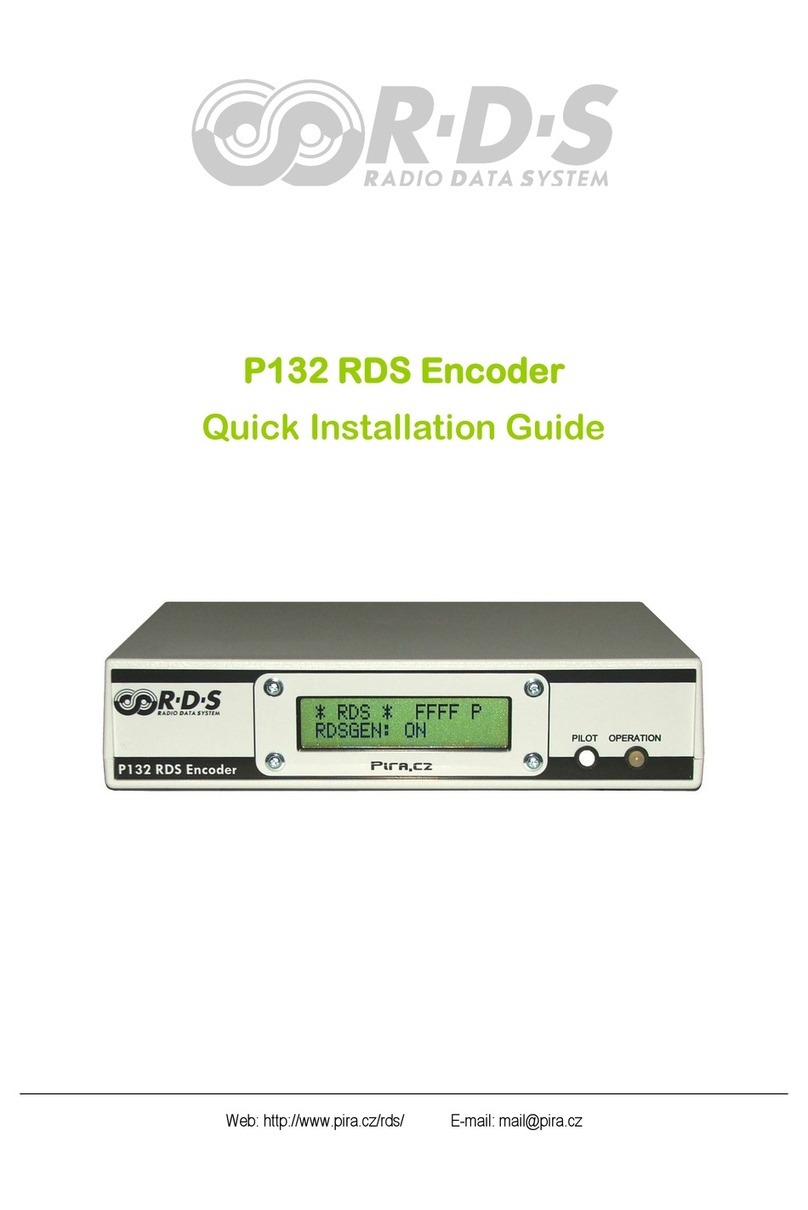
RDS
RDS P132 Quick installation guide

Linnenberg
Linnenberg SATIE owner's manual
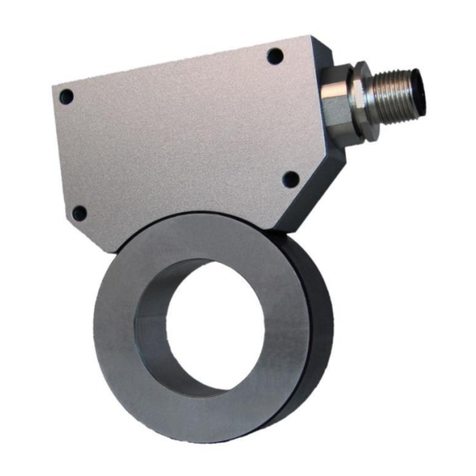
ELGO Electronic
ELGO Electronic EMAX-RO Series Operation manual

Patton electronics
Patton electronics 2300M user manual

Lynn Electronics
Lynn Electronics TEC MC-1500 Quick installation guide

